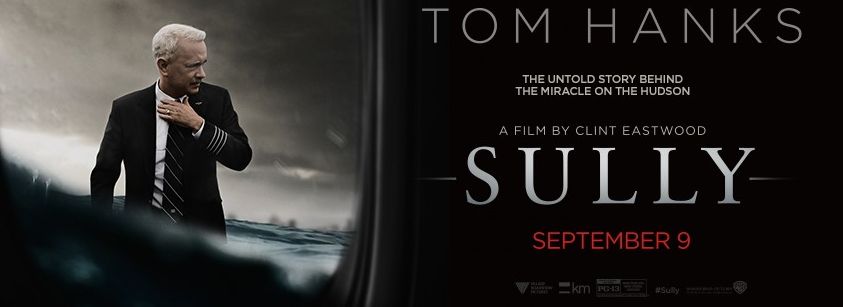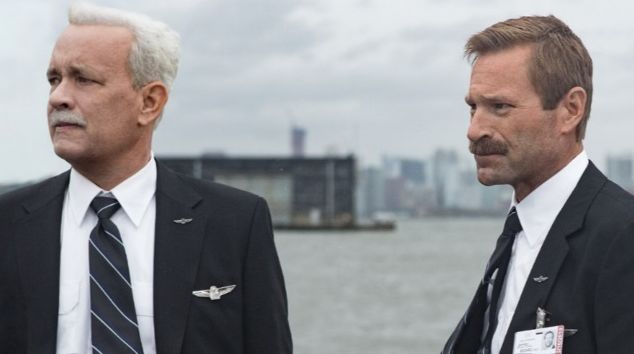
"Sully" Review
 What does it mean to be deemed a hero? Clint Eastwood explored that question in his previous film, the powerhouse “American Sniper”, the story of Navy SEAL Chris Kyle. Now, Eastwood, at 86, tackles another heroic figure - Captain Chesley “Sully” Sullenberger - the man who pulled-off the “Miracle on the Hudson”.
What does it mean to be deemed a hero? Clint Eastwood explored that question in his previous film, the powerhouse “American Sniper”, the story of Navy SEAL Chris Kyle. Now, Eastwood, at 86, tackles another heroic figure - Captain Chesley “Sully” Sullenberger - the man who pulled-off the “Miracle on the Hudson”.
Tom Hanks anchors “Sully” with a very human performance as the stoic pilot. The film begins, not with the “forced water landing”, as Sully classifies it, but rather the immediate days following the events of January 15, 2009. Still in NYC, Sully is a reluctant media sensation. But he’s also feeling the heat from officials of the National Transportation Safety Board, who are investigating the incident and second-guessing his decisions.
Representatives pound Sully with question after question, trying to figure out why, exactly, he chose to land U.S. Airways flight 1549, carrying 155 passengers and crew, on the Hudson River, when test results run immediately after the event showed that Sullenberger could make it safely to either of two nearby airports after his engines failed following a bird strike.
Eastwood makes a smart decision with his narrative: He needs “villains” to give this story drama, but he can’t make Sully a “bad guy”, as was the case with the pilot Denzel Washington played in Robert Zemeckis's 2012 film “Flight” (spoiler alert if you haven’t seen it by now), who admitted to being an alcoholic. “Sully” is based on Sullenberger’s own book, and clearly he acted responsibly before and during that fateful day (otherwise we would’ve heard about that by now).So the challenge was to create dramatic tension out of a story that may not have much besides the obvious. This was Eastwood’s checklist:
Step 1: Work with the Material You’ve Got. He stages the water landing in three separate sequences that are as intense and captivating as anything on screen this year.
Step 2: Establish an Appealing Conflict. Sully vs. the NTSB actually works because, throughout the course of the movie, you’re rooting for him to be proven right.
Step 3: Let Hanks Shine. With restrained but meaningful delivery of well-crafted dialogue - including one of the best transitional lines of 2016, “Can we get serious now?”, and plenty of strong moments, Hanks is at the top of his game.

Step 4: Surprise Us. “Sully” isn’t simply “The Hanks Show”. As his character states late in the film, it wasn’t just him who “saved the day”. It was a team effort. Aaron Eckhart is quite believable as co-pilot, Jeff Skiles. Laura Linney rises above some corny dialogue as Sully’s wife, Lorraine, who we only see during phone conversations with her husband. And Eastwood’s special attention given to about a dozen minor characters adds to the realism.
And Step 5: Tie it All Together. “Sully” does end abruptly and has a brisk total runtime of 96 minutes. But I like the unique angle taken with the closing credits scenes. They make you feel proud - like you just witnessed something incredible - and to get a feeling like that out of any movie is somewhat of a Miracle.
It's also worth noting that film is being released on the weekend of the 15th Anniversary of 9/11. Eastwood includes a heavy amount of subtext involving that tragedy, particularly relating to why Sully made the critical decision that he did. At one point a character remarks, "It's been awhile since New York had news this good - especially with an airplane in it."


